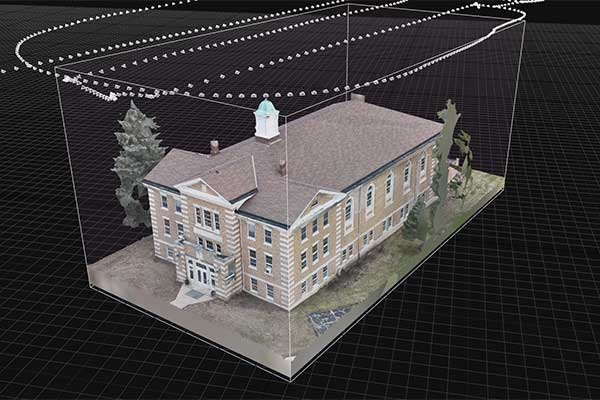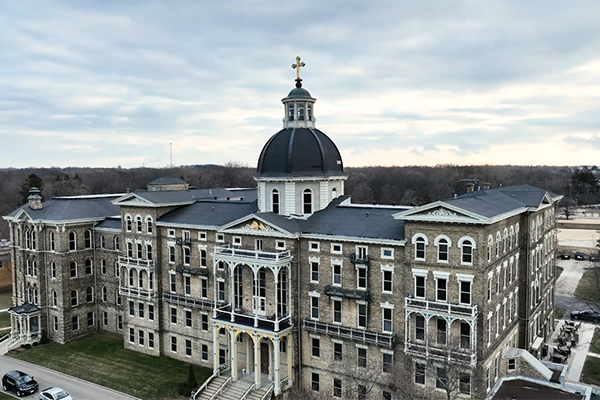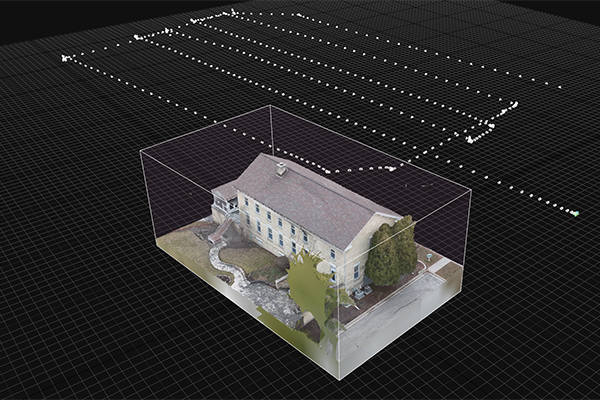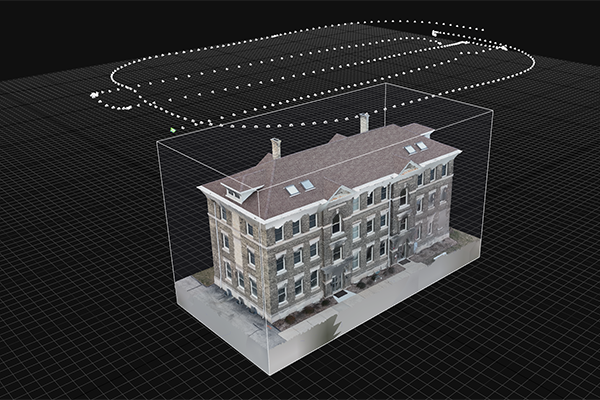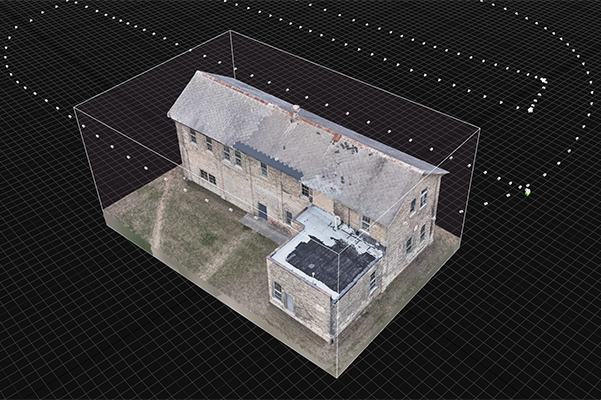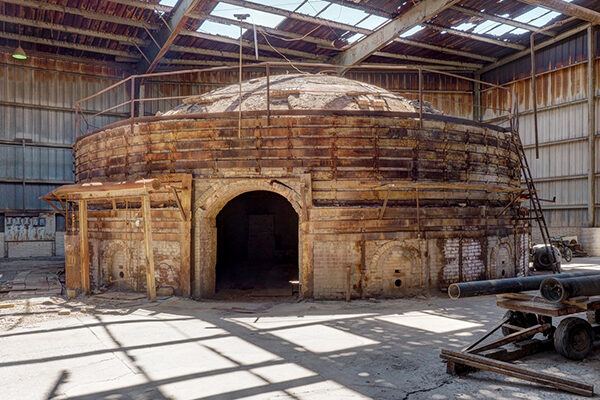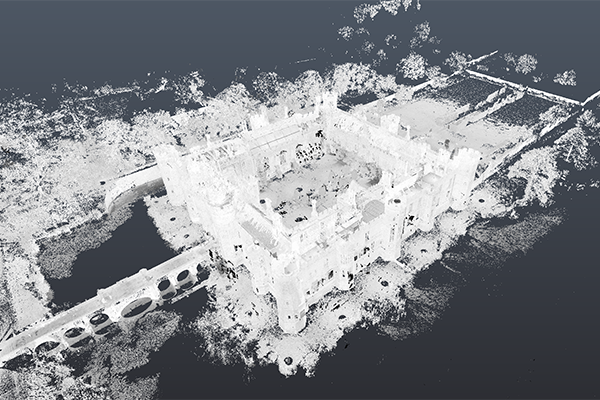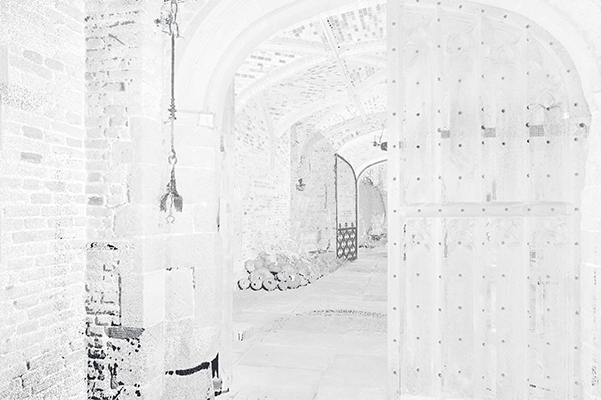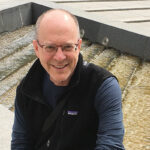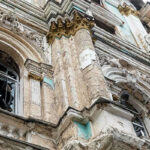UWM Students Apply Laser-Scanning Skills to Real-World Projects
UWM graduate students and Historic Preservation Institute (HPI) researchers Teresa Klopp, Eli Lingle, and Patrick Groh are applying their knowledge of advanced field documentation and modeling technology to real-world projects. HPI provides students with opportunities to conduct detailed field documentation and process raw data into 3D CAD models. Collecting and converting this data keeps students at the forefront of emerging technologies in building information modeling, while also creating detailed records of threatened structures for future generations.
St. Francis Domes
Taking accurate, three-dimensional scans of the iconic 1856 dome at St. Francis de Sales Seminary in St. Francis, students will examine and present various schemes for new copper cladding proposals. Though currently clad with vinyl siding and asphalt shingles, the focal point of the Archdiocese’s lakefront campus will be restored based on historical research, measured drawings, and 3D modeling. In collaboration with Ramlow/Stein Architects of Milwaukee, students will present several alternatives to seminary leadership, and one of the schemes will be advanced for completion.
Gladding-McBean Beehive Kilns
Students will also scan the massive “beehive kilns” at Gladding McBean’s extensive terra-cotta production facility in Lincoln, California. A partner of the the UWM School of Architecture & Urban Planning, Gladding McBean is one of the nation’s few remaining producers of architectural terra-cotta and one of the oldest. Near the end of the academic year, students from the Terra-Cotta studio will travel to California to tour the campus. Students will scan the kilns used for creating terra cotta and will rescan the facility as a whole using drone-scanning and photogrammetry (conversion of hundreds of photos into three-dimensional models).
Herstmonceux Castle
HPI students are also using laser-scanning and modeling in England, at the fifteenth century Herstmonceux Castle in Sussex. One of the oldest brick buildings in England, the centuries-old castle is currently closed to the public due to severe structural issues. Following initial photogrammetry and laser-to-radar (LIDAR) scans taken by Associate Professor William Krueger, students are taking scan-data into reality: “Right now, I am processing those scans—turning them into a point cloud, and I’m going to start the process of documenting those. I’m going to rebuild it as best I can, and then in summer, we’ll go back and collect more data, whatever is missing or needs some fine-tuning,” said Teresa Klopp. Modeling these things will help with structural and feasibility studies—water damage in the roof and deterioration of the south walls threaten the integrity of the castle. With assistance from the Bader Foundation, students traveling to the castle later this year will scan and document interior spaces and architectural features such as staircases and millwork.
Laser Scanning
Using laser scanning, data-processing, and historical documentation skills learned in the UWM School of Architecture, HPI researchers will also conduct studies and proposals for the 1893 Pabst Mansion pavilion and the mid-century Mitchell Park Domes in Milwaukee, as well as the dome of the 1906 County Courthouse in Manitowoc. In addition to providing useful documentation and digital fabrication skills to students, these projects provide permanent records of extant buildings.
